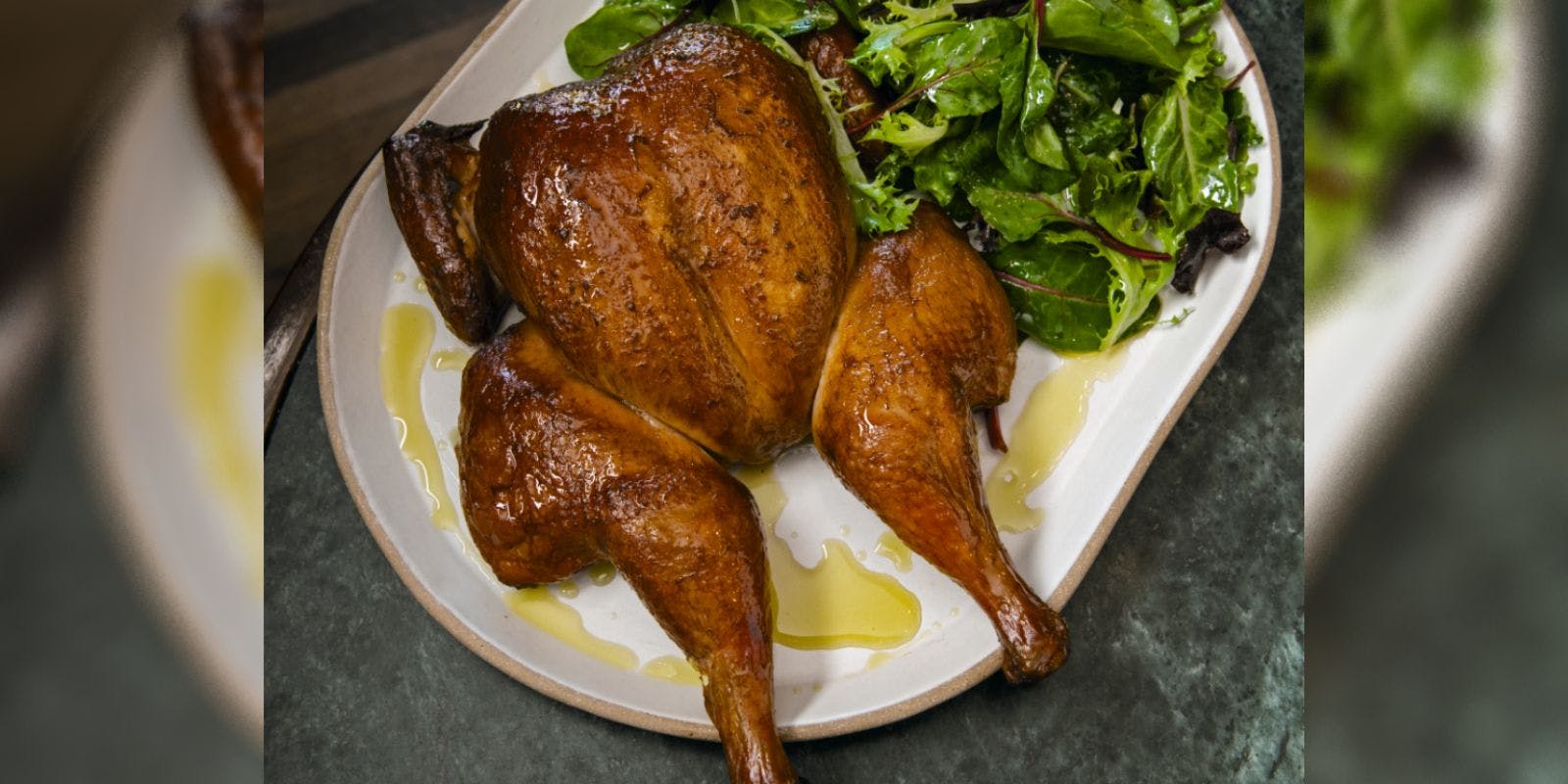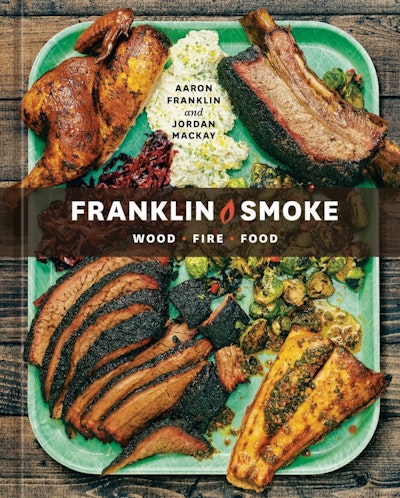Every time that I serve a smoked chicken to guests, they all say, ‘Wow, I never thought of smoking chicken.’
While working on this book, I discovered that Aaron never cooks with the lid of his PK grill closed, which I do all the time. Practically, this means that Aaron doesn’t smoke foods on the PK, and I do. (All the other recipes for the grill in this chapter should be cooked without the lid.) This is probably because Aaron co-owns a restaurant that has a number of smokers and has at least one at home, while for the longest time I did not. And because of his preference for the perfect smoke that a fully burning fire creates, he’s never even thought of smoking anything on the PK, which offers a more rustic, less efficient smoking environment but still works quite well for smaller items such as this chicken.
Every time that I serve a smoked chicken to guests, they all say, ‘Wow, I never thought of smoking chicken.’ Nothing seems more obvious to me, and, in fact, I can think of almost no more delicious way of cooking chicken. Smoking delivers not only beautiful golden brown skin with a ton of flavour but also incredibly tender, juicy meat. And the method could not be simpler. By the way, this method works equally well for quail, guinea fowl, Cornish game hens, or any other small-to-medium-size bird with light-textured meat. It also produces wonderful boneless leg of lamb, pork roasts, and any other medium-size cut that will fit on the grill with the lid closed.
While you can easily do a whole intact chicken this way, I recommend spatchcocking (aka butterflying) it so it cooks more evenly and faster and thus doesn’t take on too much smoke. Basting it with a vinegary mustard solution adds zest and character.
Basic spatchcocking is quite easy. You can make it more complicated if you decide to remove the wishbone and ribs, which requires a smidge of deft knifework. But I like to leave the ribs on to protect the breasts during cooking. Plus, they’re much easier to remove when the bird is cooked. The wishbone is a little tricky to extract, so I usually just cut it out after the bird comes off the grill. As always, the chicken tastes and cooks better if it has been pre-salted and air-dried in the fridge for at least a day.
Ingredients
The chicken
- Kosher salt
- 1 whole chicken, 3 to 5 pounds, spatchcocked
The mop
- ½ cup / 120g sherry vinegar
- ¼ cup / 55g unsalted butter
- 2 tablespoons / 30g Dijon mustard
- 1 tablespoon / 20g honey
- 1 tablespoon / 9g freshly ground black pepper
- ½ teaspoon / 3.5g kosher salt
Method
Liberally salt the chicken all over and set it on a baking sheet. Let the chicken air-dry, uncovered, in the refrigerator for at least 24 hours or up to 72.
To make the mop: At some point before cooking the chicken (this can be done a day ahead of time, then refrigerated and reheated), in a small saucepan over low heat, combine the vinegar, butter, mustard, honey, pepper, and salt and warm through, stirring occasionally, until the butter melts and the mixture has formed a sauce.
Remove the chicken from the fridge and allow it to temper on the counter.
Ready a chimney full of charcoal, then dump the chimney into one end of the grill bed. Using the Franklin Formation (see page 142), lay a log next to the coals to form the boundary of a two-zone setup, or alternatively, place a good-size wood chunk on the coals. Close the lid and allow the wood to start smoking. The temperature should be hot—somewhere between 400° and 450°F (204°C and 232°C).
Lay the chicken, breast-side up, on the grate as far as possible from the heat, with the legs nearest to the heat. Close the lid and cook for 25 minutes.
Open the lid, lift the chicken (using tongs or pick it up with a kitchen towel in your hands), and place a quarter sheet pan under the chicken. The pan will capture your mop and let it combine with the chicken juices, evaporating them and steaming the underside of the bird. This is a good time for the first drizzle with the mop. Drizzle with the mop again after 15 minutes and a third time after another 15 minutes.
Now’s a good time to gauge the temperature. Insert a digital thermometer into the center of the breast (you’re looking for about 150°F or about 65°C) and then in the thickest part of the thigh, but not touching the bone (you want 175° to 180°F or 79°C to 82°C). It will probably require more cooking, so continue to baste every 10 to 15 minutes until it’s done.
When the chicken is done, transfer it to a platter and let rest until cool enough to carve and serve.














